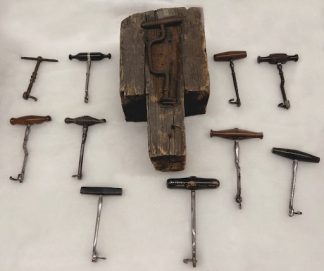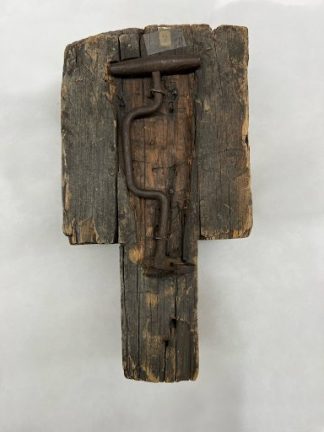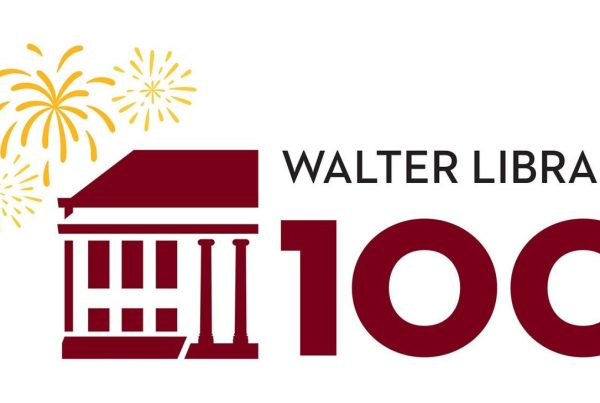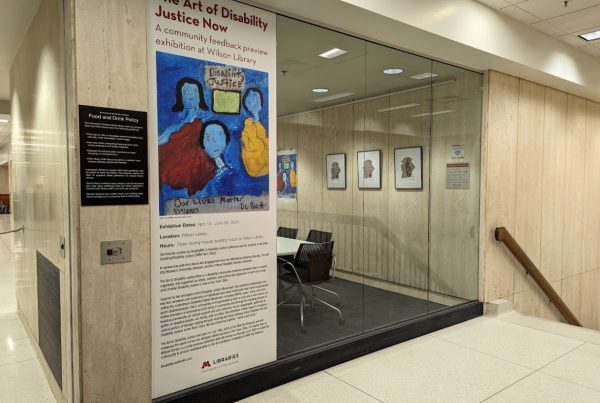By Abby Wright, intern
Tooth keys at the Wangensteen Historical Library
For most people, dental hygiene is of the utmost importance. You wake up, do a little stretch, and then go brush your teeth. Seems simple, right? Surprisingly, it was not that simple for people in the early 1900s. If you are a history buff, or have taken a history class, it probably comes as no surprise that people had poor dental hygiene throughout most of history. However, what probably does come as a surprise to most, as it did to me, is that, according to the Smithsonian, daily tooth brushing only became the standard in the United States after the second World War. Meaning, if your grandparents have dentures, it is probably an indication that they did not or were not able to brush their teeth as children. What’s more, according to the American Dental Education Association, dental medicine and the idea of dentistry itself was not introduced until the 1700s, and even then was not a well-established career field. As dentistry became more professionalized, people began experimenting with different tools and instruments for tooth brushing and dental care. One of the earliest forms of dental technology comes in the form of tooth keys, an early form of dental forceps that most readily resemble antique, corkscrew wine openers. This shape would have allowed people practicing dentistry with tooth keys to have a more secure grip on the instrument.
In the Wangensteen Historical Library of Biology and Medicine (WHL)’s collection of roughly 8,400 artifacts, there are eleven tooth keys, plus three possible but as of yet, unidentified objects that resemble tooth keys. Artifacts like these are part of the reason why the WHL needs a researcher to conduct research and investigate the date, function and historical significance of certain objects, in order to add this information (metadata) to the library catalog. Fortunately in the fall of 2022, the Wangensteen Library received a Minnesota Historical and Cultural Heritage Grant, frequently called a Legacy Grant, which provides financial support for projects that preserve Minnesota’s History and Culture. This allows the library to hire an artifact researcher dedicated to solving mysteries, like the potential tooth keys. In turn, this also allows the library to tell these stories to researchers, students, artists, and people from not just Minnesota, but around the world as well.
The Fond Du Lac tooth key
Lucky for us, some of the artifacts in the Wangensteen already have provenance information – evidence that tells us more about when, where, by whom, and upon whom these instruments were used. For example, one of the eleven tooth keys has a small piece of paper that reads:
“This specimen, evidently made by a blacksmith, was found fastened to one of the supports of the ruins of the American Fur Company’s trading post at Fond Du Lac, Minnesota. (1816-1852). The part of the beam was cut out and sent to Dr. A. W. Ide who presented it to the Society.”
It is important to note that we do not know the origins of the note itself, and the content or context of the piece of paper could have doubtful authenticity, or have been created using circumstantial or presumed knowledge. If we take the note for its word, the tooth key in question is currently fastened to a section of wood and is said to have come from Fond Du Lac, Minnesota. Fond du Lac (French for “bottom of the lake”) is currently a neighborhood in the city of Duluth. From the 16th-19th centuries, it was the site of an Ojibwe settlement located in the estuary Gichigami-ziibi, the outlet of the St. Louis River. It was also home to two of the most prevalent North American trading companies during the time: the British North West Company and the American Fur Company. Both companies had a wide variety of shops for different trades in Fond Du Lac, including blacksmiths. The tooth key appears to be hand forged, most likely by a blacksmith, and could have been use for a variety of purposes by a number of people, including the blacksmith themselves, as blacksmiths from this time often doubled as dentists. We could also speculate that this tooth key served other purposes such as being used to display both the blacksmith’s wares and dentistry status.
When it comes to the artifacts in the WHL’s extensive collection, there is oftentimes no origin story (provenance) to accompany them. A number of instruments are also unidentified – both in their purpose and name, which the grant researcher will begin to unpack. Lois Hendrickson, the Wangensteen Library’s Curator, explains that “the process [of assessing artifacts] involves determining background information, former owners, where it was used, why it was needed, or if there are similar artifacts in the collection.” This process is time consuming due to the size of the WHL’s collection and the incredibly detailed nature of the artifacts – some of which have 52 pieces (a surgical kit). The researcher will focus on artifacts classified as instruments, objects intended to be used to perform a procedure, investigate an illness, or create a product used in healthcare, which makes up about half of the total collection. These objects are incredibly diverse as they come from different specialties that range from dentistry to nursing to pediatrics to surgery and more, and tell engaging stories that pertain to anything from gender differences to early disability tests and accommodations. It is important for us to determine these diversities because, as Lois emphasizes, “looking at artifacts using a lens of diversity and inclusivity shifts the WHL’s role as gatekeeper to sharer of cultures that document healthcare practices and experiences, the growth of professional fields, changing medical ethics, innovative research, and shifting paradigms of how various cultures understand the ways bodies function and malfunction.”
Next steps with the Legacy Grant
As of now, the records for the artifacts are incomplete and are not publicly available, requiring the public to work with the Wangensteen Library’s staff to do any research. The mediation between the public and the curators is what we are hoping the grant will eliminate. Lois explains that “creating and enhancing information about these objects, both metadata, reference photos, and a subset of 3D objects makes them usable and useful. For the WHL, a collection with known research value and a built-in pool of researchers, having unmediated access to object information in the catalog [will] be transformative.”
Thanks to the funding received from the Legacy Grant the Wangensteen Library is going to be able to take 4,000 instruments from its collection of 8,300 artifacts and enrich their catalog records through the creation of new, more improved metadata, thereby furthering the opportunities for research and study. In addition, the grant is supporting photography of most of these artifacts and 3D digital models of a select few. These photographs will be uploaded to UMedia, which provides access to digitized collections from across the University of Minnesota, the 3D models will be found on SketchFab, a website designed for anyone to publish and find 3D content online. The description of the artifacts written by the researcher will be found on the UMN Libraries catalog when the project is complete in 2024. By making the collection more accessible to researchers, students, professors, artists, historians, and anyone looking to learn more about artifacts like the mysterious Fond Du Lac tooth key, we are hoping they will be able to do so with more confidence and ease.
If you are interested in learning more about the research process and metadata creation behind these artifacts, keep your eyes open for the next article of this three-part series!
 This project has been financed in part with funds provided by the State of Minnesota from the Arts and Cultural Heritage Fund through the Minnesota Historical Society.
This project has been financed in part with funds provided by the State of Minnesota from the Arts and Cultural Heritage Fund through the Minnesota Historical Society.
Abby Wright is a first-year student in the College of Liberal Arts (CLA), interning for the Spring 2023 semester at the Wangensteen Historical Library as part of the Dean’s First-Year Research and Creative Scholars program (DRAFCS).







